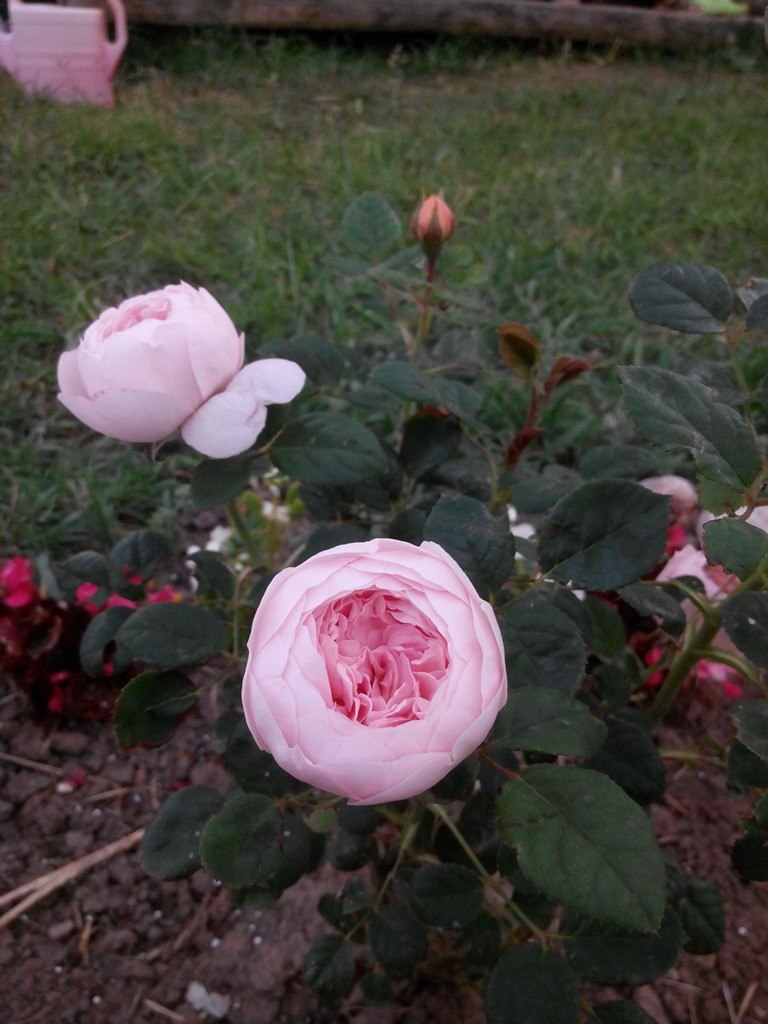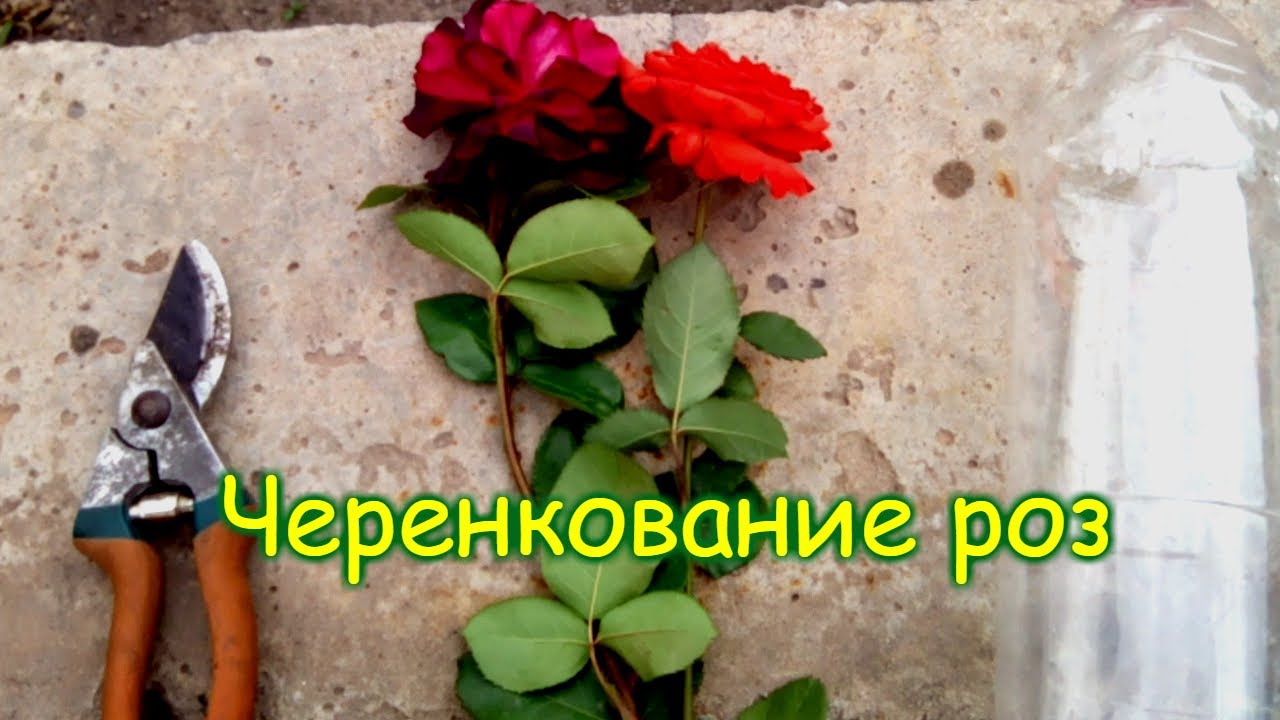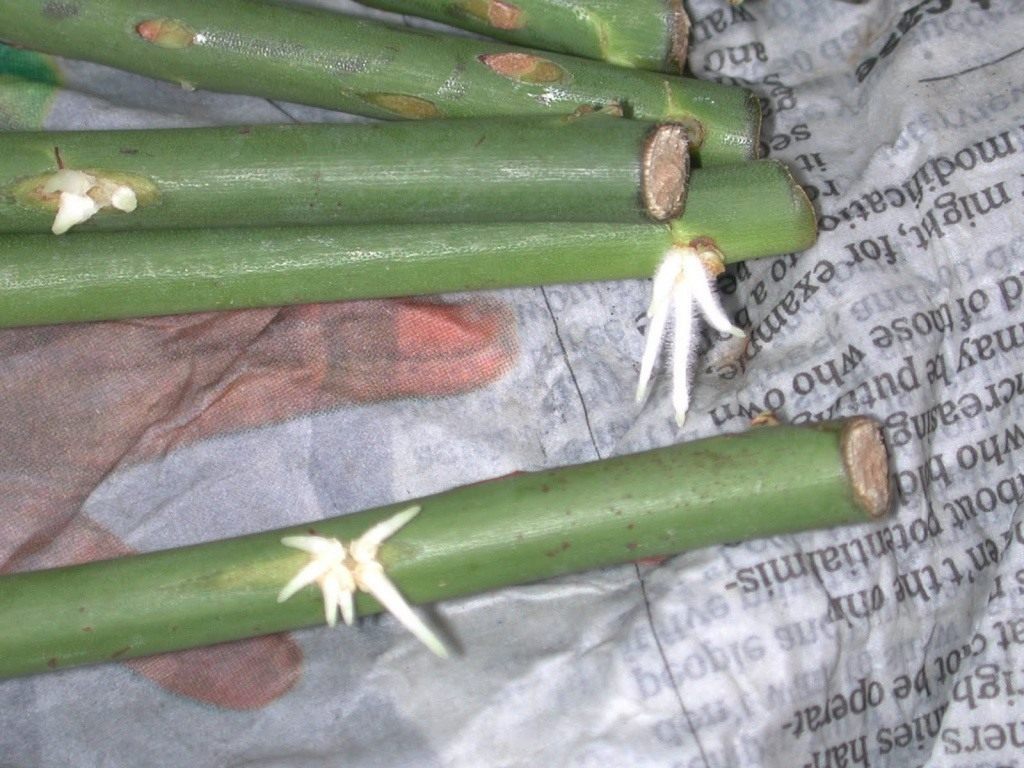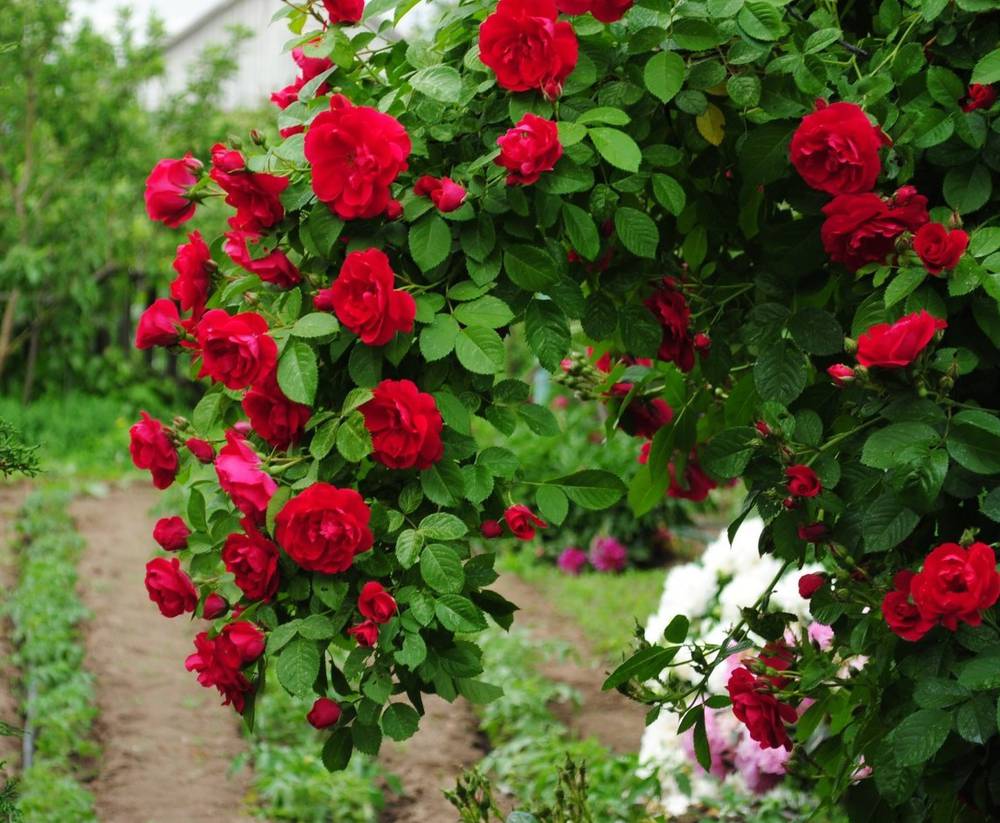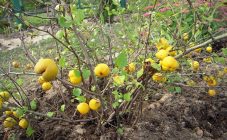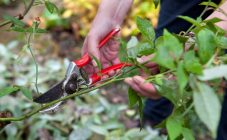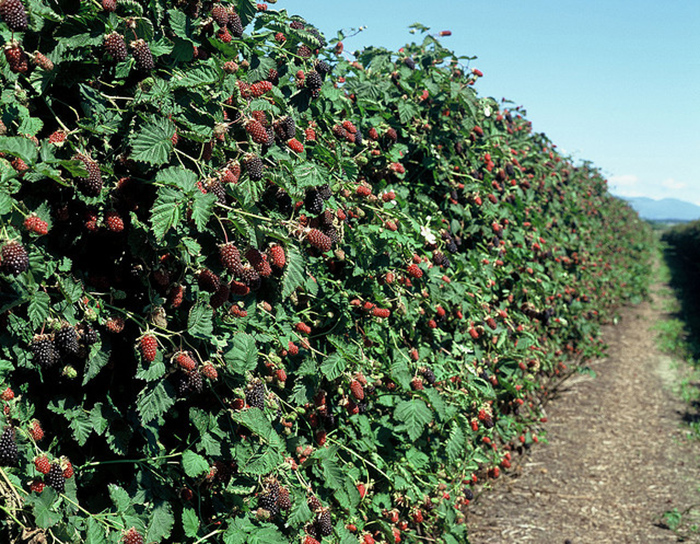Content:
- Growing roses in the summer outdoors
- How to cut roses in summer: ways
- Reproduction of roses by cuttings in summer: advantages and disadvantages
- Basic rules for grafting
- Summer planting of roses in July with cuttings step by step
- Further care for rooted roses
- How to propagate a climbing rose by cuttings in summer
Roses are one of the most beautiful flowers that adorn flower beds in squares, gardens and parks throughout the season until late autumn. There are many varieties and varieties of these flowers. Roses are divided into park, climbing, hybrid tea, miniature, ground cover.
Growing roses in the summer outdoors
For seedlings, choose a suitable place and land. The soil is needed loose, fertile. Stagnation of moisture around the bush is unacceptable. This can lead to root rot.
Roses can multiply:
- seeds,
- cuttings,
- dividing the bush (transplanting, offspring, layering).
Plantings are planted mainly in spring and autumn. If there is a need to plant roses in summer, seedlings are chosen with a closed root system (in a container) or grown by cuttings.
Plants will not take root with an open root system in hot summer. The purchased seedlings in the container may take root. When buying, it is advisable to choose a healthy seedling without damage and stains. Preference is given to a bush with several lignified shoots.
How to cut roses in summer: ways
Cutting creates healthy young bushes, the plant retains varietal qualities. There are several methods of rooting roses by cuttings, they differ in the way the cuttings are immersed in a moist nutrient medium: soil, liquid, potatoes.
A medium-sized potato for germination of cuttings is selected and all eyes are removed from it so that it does not sprout. Having made a depression and inserted a petiole into the tuber, you can plant it in a pot or in a prepared place on the land. Potatoes are poured into the trench, 15 cm apart, leaving a third of the petiole on top. Cover with cans on top. Thus, the seedlings will receive useful substances and a constant moist environment will be maintained around it.
The burrito method is a simple method recently invented by gardeners. Shoots for such germination are harvested longer, by 5-6 buds. The cut cuttings are tightly wrapped in damp paper or newspaper, they are placed in a dark bag and left to germinate in a moderately warm place. The scions are constantly checked to ensure that they do not rot and mold. If the need arises, the paper is moistened.
After 2 weeks, the sprouts on which the callus has formed are planted in the soil, under the jar. Garden roses, especially climbing roses, are easy and convenient to grow in this way.
You can also use a glass of water, but this method is more time consuming, with the smallest yield of seedlings. The liquid is gained 2-3 cm, a growth stimulator is added to it and a sprout is placed. For the germination of roots, the container is placed in a bright place without direct sunlight. When the roots appear, they are planted in a pot.
Reproduction of roses by cuttings in summer: advantages and disadvantages
Cutting roses in summer is a natural way to root roses by cuttings in your garden. This breeding method has its advantages over grafted shrubs:
- plants grown in this way do not form root growth;
- planting material is easy to obtain, which allows you to propagate any variety you like;
- bushes made from cuttings are more durable than grafted ones.
The disadvantages include the poor tolerance of the first winter, since the plants do not have time to grow a large root system over the summer. We need to provide their shelter.
Cutting roses in July, before and during flowering is a favorable period. Rooted sprouts will have time to develop during a warm period of time. In the southern regions, cuttings of roses into the soil can be carried out until mid-August.
Basic rules for grafting
For the purpose of cuttings, shoots are chosen when they have expanding buds. The stems of roses with unblown buds are cut for cuttings, not young, but not old either. You can check by breaking off the thorns on the stems. If they break off easily, then the branches are suitable for cuttings.
The best time to harvest stalks is in the morning, when the bushes are filled with moisture. Sharp (so as not to cause injury to tissues) and treated with a disinfectant with a knife or pruning shears, cut pieces 12-15 cm long. Cut them from the middle of the stems, with three healthy intact kidneys. The lower cut is made obliquely immediately under the bud, the upper cut is 2 cm higher. The leaves are removed or cut off by a third so that moisture evaporates less. When grafting in the light, the leaves must be left, and when germinating in a bag, the leaves are cut off. The thorns must also be carefully removed.
Having made a high-quality selection and cut suitable cuttings, it is advisable to place them in a root growth stimulator for a day. Kornevin, Heteroauxin will accelerate the appearance of the root system, which will appear in 14-15 days, with the usual method it will take 30 days.
You can use folk remedies to stimulate root growth: dissolve 20 drops of aloe juice or a teaspoon of honey in 250 g of liquid.
Summer planting of roses in July with cuttings step by step
Before planting cuttings on the site, it is necessary to prepare a place and fertile land, which is used to fill the allotted area. The place is chosen darkened so that the sprouts do not get burns under the scorching sunlight. You can place them under trees so that the sun hits them at times.
The bed is covered with 8-10 cm of sod-humus soil, on top - a layer of 3-4 cm from a mixture of equal parts of sand and peat.
The shoots are planted to a depth of about 2 cm; if they are planted deeper, the rooting process will slow down. Cover with glass jars or plastic bottles, creating a greenhouse effect. A plot of land with seedlings should be constantly slightly moistened. During the summer, plants are watered between the banks, they do not need to be removed and lifted.
The formed young pink bushes remain to winter in the beds, so a shelter from frost should be provided.In addition to cans, you can cover with leaves, grass.
Roses are planted in a permanent place next spring.
Further care for rooted roses
New rose bushes need to be looked after: water on time, regularly apply organic and mineral fertilizers.
Roses are moisture-loving plants, but watering should be moderate. Roses are watered once a week under a bush. Care must be taken to ensure that the soil under the plants does not dry out. With a lack of moisture, the leaves will begin to turn yellow.
Periodically, you need to feed with organic and mineral fertilizers, but you must not exceed the dose, carry out the procedure in the sun and apply fertilizing to the unmoistened soil.
When caring for a rose in summer, you need to know how to prepare shrubs for winter. In summer-rooted roses, the root system does not have time to get stronger before winter and therefore they are not frost-resistant. They need to be covered in the first winter.
All activities for the care of the rose garden end in late summer or early autumn so that the plants can prepare for winter and easily endure the cold. Watering and fertilization ceases, soil loosening. Top dressing provokes the appearance of new shoots, this is a waste of the plant's strength, reducing its frost resistance. In mid-October, dry, old and diseased branches are cut, and inflorescences are removed.
How to propagate a climbing rose by cuttings in summer
A hedge of climbing roses can be seen near private houses and summer cottages. Summer residents decorate arches, gazebos, walls of houses with roses. Gardeners cultivate climbing roses by cuttings, layering, budding. Spring and summer is the best time to propagate such a rose. Climbing roses are not cultivated with seeds, because the new plant will no longer bear the parental characteristics. To get a bush that completely repeats all the qualities of the selected variety, the rose is propagated vegetatively - by layering, cuttings and grafting.
Cutting climbing varieties is a common method, and even a layman can propagate a rose by cuttings in the summer. They do this in mid-June. Almost all cuttings cut from young immature shoots take root. Cut segments of stems with 3-4 buds, 15-20 cm long. Make a cut from below at an angle of 45 degrees, from above - 90 degrees. Then they act according to the same scheme as with other types of roses.
Caring for rooted cuttings of a climbing rose consists of watering, weeding and loosening the soil. When preparing plants for winter, they must be removed from the support and laid on the ground, covered with peat or loose earth.
Even if there is no experience in growing roses, it is worth trying any method of cutting flowers at home. This is not at all difficult to learn, no special knowledge is required for this.
